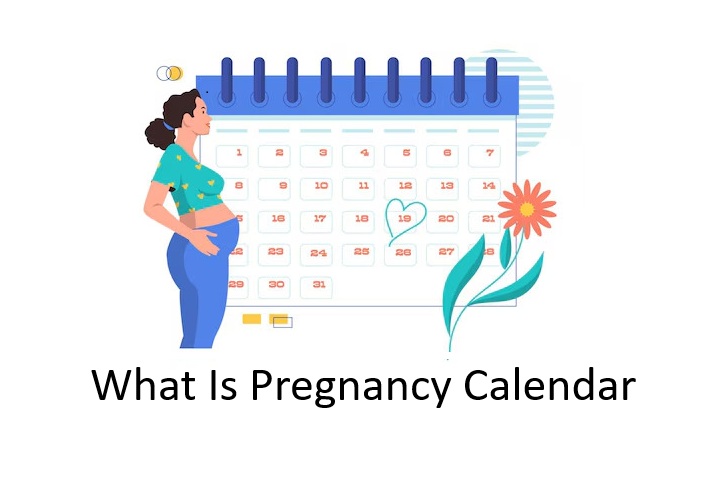Pregnancy Calendar: A Comprehensive Guide to Your Pregnancy Journey
Pregnancy is a remarkable and transformative journey, lasting approximately 40 weeks, divided into three trimesters. The pregnancy calendar serves as a detailed guide to help you track the development of your baby, monitor your health, and understand the various milestones throughout this exciting time. This 1000-word overview will cover key stages, trimester-by-trimester breakdowns, and important things to know at each stage.
First Trimester (Weeks 1–12)
The first trimester is the period of conception and early development. This stage is crucial for your baby’s organ formation and setting the foundation for healthy growth. The first few weeks of pregnancy are counted from the first day of your last menstrual period (LMP), although fertilization typically occurs about two weeks later.
Weeks 1–4:
- Key Developments:
- After conception, the fertilized egg (zygote) divides and forms a blastocyst.
- The blastocyst embeds itself into the uterine lining and begins developing into the embryo.
- At the end of Week 4, a tiny, barely visible baby is developing inside the womb.
- What You May Experience:
- Early signs of pregnancy, such as missed periods, nausea (morning sickness), breast tenderness, and fatigue, may begin to surface.
- Hormonal changes are rapidly taking place, and you may experience mood swings.
Weeks 5–8:
- Key Developments:
- The embryo is rapidly growing. By Week 6, the heart begins to beat, and by Week 8, the embryo is now officially called a fetus.
- Major organs and structures like the brain, lungs, and kidneys start to develop.
- Limb buds, which will become arms and legs, appear.
- What You May Experience:
- Many women experience morning sickness (nausea and vomiting) during these weeks.
- Fatigue, frequent urination, and bloating may also occur due to hormonal changes.
- You might begin experiencing heightened emotions due to hormonal shifts.
Weeks 9–12:
- Key Developments:
- The fetus now looks more human-like, with distinct facial features and the beginnings of nails, eyes, and ears.
- By the end of Week 12, the risk of miscarriage drops significantly, and your baby’s organs continue to mature.
- The fetus can move its arms and legs, though you won’t feel movement just yet.
- What You May Experience:
- Morning sickness may start to subside in Week 12, bringing relief to many women.
- You may start to notice physical changes, such as a slight baby bump or the need for larger clothing.
Second Trimester (Weeks 13–26)
The second trimester is often considered the “honeymoon” phase of pregnancy, as many women experience a relief from the early pregnancy symptoms like morning sickness and fatigue. This stage marks significant growth for both the baby and the expectant mother.
Weeks 13–16:
- Key Developments:
- The fetus continues to grow rapidly, with the skeleton beginning to harden and the organs continuing to mature.
- Fine hair (lanugo) grows on the baby’s body.
- By the end of Week 16, the baby’s facial muscles are developing, and it can make facial expressions.
- What You May Experience:
- You may feel less nauseous and more energetic.
- The baby bump begins to become visible, and you may start to show.
- It’s also a time when women often have their first ultrasound to screen for fetal development.
Weeks 17–20:
- Key Developments:
- The baby’s body is now more proportional, and it can start moving around in the womb (although you might not feel the movements yet).
- The baby’s digestive system starts working, and the kidneys begin to produce urine.
- Gender can often be determined via ultrasound around this time.
- What You May Experience:
- The “quickening” feeling, or the first movements of the baby, may be felt by some women around Week 20.
- Your belly continues to grow, and you may feel increased back pain as your body adjusts.
- Your skin may experience some changes, such as stretch marks or the “linea nigra,” a dark line that runs down your belly.
Weeks 21–24:
- Key Developments:
- The baby’s skin is still translucent, but it is becoming less fragile. By Week 24, the baby’s lungs are developing and practicing breathing motions.
- Eyebrows, eyelashes, and nails continue to develop.
- The baby can now hear sounds from the outside world, such as your voice or music.
- What You May Experience:
- The growing belly might cause more physical discomfort, such as lower back pain and leg cramps.
- You may notice that your hair and nails are growing faster and stronger due to hormonal changes.
Weeks 25–26:
- Key Developments:
- The baby is gaining weight, and its brain development accelerates.
- The baby’s eyes can open and close, and it may respond to light and sound.
- By the end of Week 26, the baby could survive outside the womb, but the chances of survival improve significantly after 28 weeks.
- What You May Experience:
- Increased discomfort due to the baby’s growth, including pelvic pressure, backaches, and difficulty sleeping.
- You may experience “Braxton Hicks” contractions, which are practice contractions that help prepare your body for labor.
Third Trimester (Weeks 27–40)
The final trimester is the home stretch of your pregnancy. Your baby is growing rapidly, and you may begin to experience more discomfort as your body prepares for labor and delivery.
Weeks 27–32:
- Key Developments:
- The baby continues to grow in size, and its fat stores increase, giving the body a more rounded appearance.
- The lungs and digestive system continue to mature.
- By Week 30, the baby is typically head-down, preparing for birth.
- What You May Experience:
- You may feel increased pressure on your bladder as the baby grows and descends into the pelvis.
- Swelling in the feet, ankles, and hands can be common due to fluid retention.
- Difficulty breathing may occur as the uterus presses against your lungs.
Weeks 33–36:
- Key Developments:
- The baby’s bones are hardening, though the skull remains soft and flexible to help with passage through the birth canal.
- The baby begins to position itself for birth, with the head often descending into the pelvis.
- The lanugo hair begins to shed, and the baby’s skin becomes less wrinkled.
- What You May Experience:
- You may have difficulty sleeping as your body prepares for labor.
- You may experience more frequent Braxton Hicks contractions and pelvic discomfort.
Weeks 37–40:
- Key Developments:
- The baby is considered “full-term” by Week 37. Its organs are fully developed and ready to function outside the womb.
- The baby’s head is often engaged in the pelvis, and it is gaining weight to prepare for birth.
- The baby’s reflexes are developed, and it is practicing breathing and sucking motions.
- What You May Experience:
- You may feel more fatigued, and your body may begin to prepare for labor, with the cervix softening and dilating.
- Watch for signs of labor, such as water breaking, contractions, and the “bloody show” (a mucous discharge tinged with blood).
- You’re likely feeling anxious or excited about the upcoming birth.
Conclusion
The pregnancy calendar is an essential tool for tracking both the baby’s development and your well-being. Each trimester presents new challenges, but it also marks exciting milestones for both you and your baby. By understanding what happens at each stage, you can better prepare for the journey ahead and celebrate the wonders of pregnancy. Always remember that each pregnancy is unique, and seeking regular prenatal care is important for a healthy pregnancy experience.



